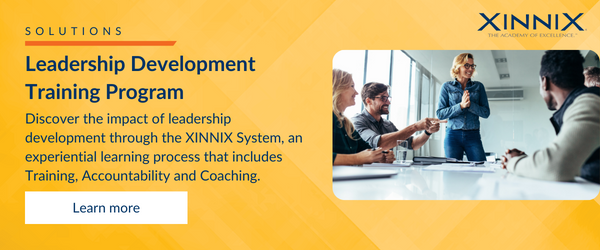The business had been flat for 18 months. Employees were leaving, making it hard to service their customers at the levels that they had become accustomed to. The sales team began discounting just to win business without thinking through the longer-term impact that it would have on the company and on the relationship with the customer. Once you begin selling at a lower price, it is extremely hard to get the buyer to accept an increase in the future. It truly becomes a race to the bottom.
The Chief Human Resources Officer (CHRO) was under a lot of pressure to retain key personnel while also recruiting top performers. The business was treading water, putting immense pressure on senior leadership to turn things around. In their planning sessions, they created strategic plans and roadmaps, consulted with outside advisors, and looked for ways to transform the business.
The CEO approved a 360 diagnostic exercise, including a complete SWOT Analysis. The CHRO also recommended an assessment of competencies and behaviors, a skills gap analysis, and an engagement and effective communication assessment be completed. They wanted as much data as they could get to help crystalize the gaps and challenge areas and to expose the blind spots that the leadership team may have been missing.
When the results came back with a complete observations and recommendations report, the leadership team could clearly see where they were missing the mark. The bottom line is that they were thinking about and running the business the very same way that they had for decades. They discussed the need to change a few years ago as they could see that they were falling behind the competition when it came to market share and their ability to retain and attract top talent. However, their meetings always ended in only verbal agreements rather than written, tactical plans to execute the strategy.
Now, with the stakes getting much higher, they knew that they needed change – more than just a training class or book on change management. They needed a realistic approach that would lead them to transform the business. They poured over the SWOT Analysis and the 360 results, the observations and recommendations report from the consulting organization they decided to work with, as well as all other assessments and data points and identified six key areas that could help transform the business: character, mindset, leading change, communication and collaboration, building up the people on the team, and taking ownership.
Each of the six areas became a tactical project of its own. Teams were established to identify the “why” behind the “what” and “how” of each area, they were seeking to transform. A common finding amongst all groups was the need to have a plan that resonated with everyone in the company as they were a truly multi-generation organization. What was seen as important by one generation was different from one or more of the other represented generations.
The best guidance that they received was to think about this change in a few ways:
1. Before entering any change management initiative, make sure that change readiness and change communications are clearly established. Too often in the past, change was happening because someone deemed that change was necessary. Changes were put upon the company and the people without making sure they were ready and that the plans were clearly articulated and communicated. By going through a change readiness and communication campaign first, they would get better buy-in along the way, and that would create a greater likelihood of change acceptance.
2. Focus on the people because in building better people, you build a better business. Focus on building upon their strengths and building trust across the organization. Make transparency, vulnerability, empathy, and trust the watchwords of the organization. Don’t say that your people are the most important asset of the company, and then ignore them. If your people are the organization’s most prized and valuable assets, treat them as such.
3. Establish a consistent feedback loop where people within the organization feel like they are being heard and are contributing to the greater good of the organization, the community, and the customer.
One thing we all know as leaders is that change will occur. The best approach we can take is to avoid status-quo thinking, make the investment to identify the opportunities to maximize the effectiveness of change, and uncover the barriers or roadblocks to the change we are seeking. Don’t be afraid of the results. Instead, lean into them, and take action where necessary to close the gap or achieve the goal.
Avoid stagnation or standing still. As Will Rogers said, “Even if you are on the right track, you’ll get run over if you just sit there.” Being a transformational leader goes beyond even this quote. It means going through experiential changes that make the people and the business better. It is about positioning the business to adapt and grow for the future.



